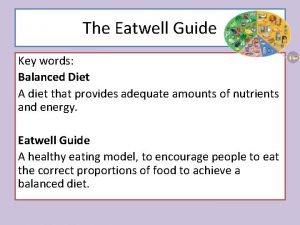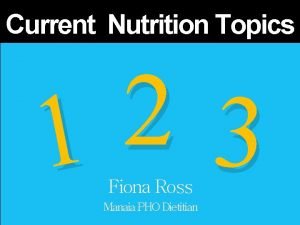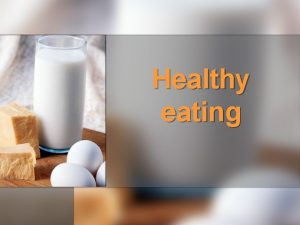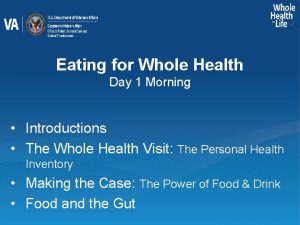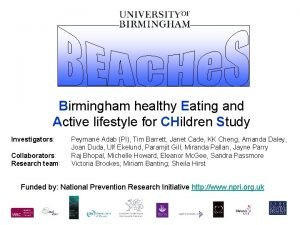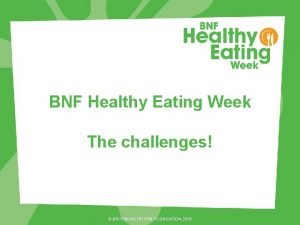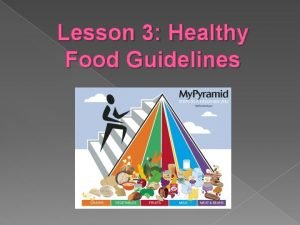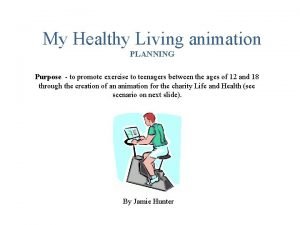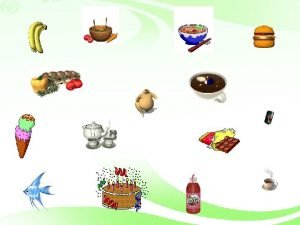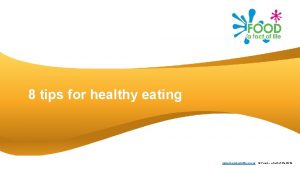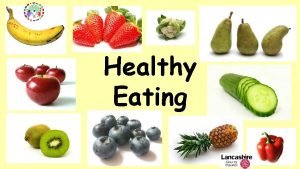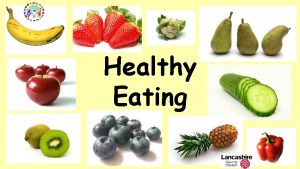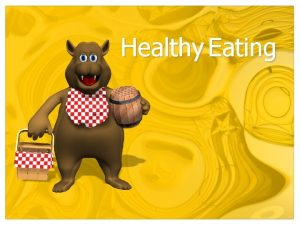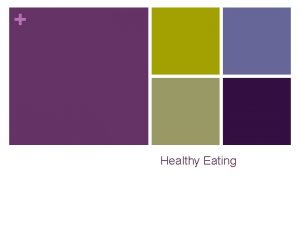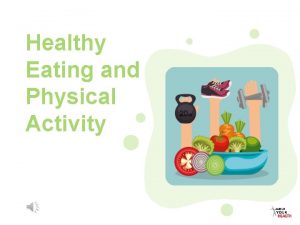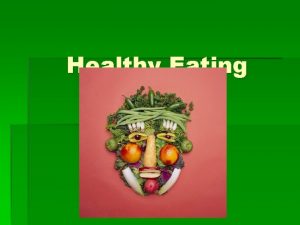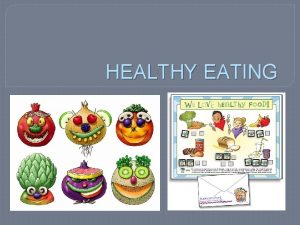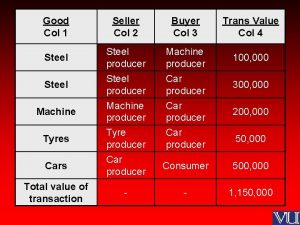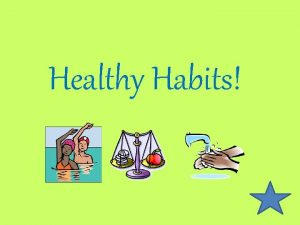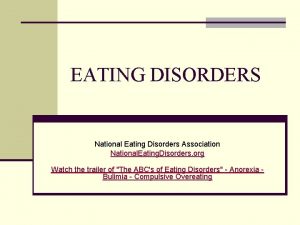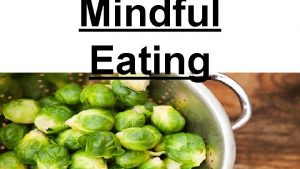Zoneing in on Healthy Eating COL Gaston P















- Slides: 15

“Zone”ing in on Healthy Eating COL Gaston P. Bathalon, Ph. D. , RD USARIEM Deputy Commander Opinions, interpretations, conclusions, and recommendations contained herein are those of the author and are not necessarily endorsed by the U. S. Army. Unclassified

Diet and health outcome relationships n n n n Saturated fat MUFA PUFA ω-3 (fish) Trans FA Refined starches/sugar Fiber Processed meats Lycopene Fruit Vegetable Calcium Dairy products Salty foods Alcohol n n n CHD Breast cancer Diabetes Constipation Diverticular disease Prostate cancer Blood pressure Cataracts Body weight Fractures Stomach cancer

Nutrition and health guidelines n AR 40 -25, BUMEDINST 10110. 6, AFI 44 -141, Nutrition Standards and Education (2002) n Scientific expert panels: n n n US Dietary Guidelines World Health Organization American Heart Association American Cancer Society Country guidelines n Experts: n n Atkins (50 g/d CHO) Ornish (10% fat) Zone (40%-30%, C, P, F) LEARN (~60% CHO, 10% SAT fat)

Weight change relative to baseline (women) No Difference -2. 1 kg -4. 7 kg Gardner, C. D. et al. JAMA 2007; 297: 969 -977. Copyright restrictions may apply.

Weight change relative to baseline (women) n Secondary outcomes (change at 12 month): n % body fat (NS – 3% in Atkins) n LDL-cholesterol (NS) n HDL-cholesterol [least in Ornish] n Triglycerides [least in Zone] n Insulin (NS) n Glucose (NS) n Systolic BP [greatest in Atkins] n Diastolic BP [least in Ornish] No difference Gardner, C. D. et al. JAMA 2007; 297: 969 -977. Copyright restrictions may apply.

Healthy diet n Focus: n Prevent nutrient deficiency n Optimization of long-term health n Do. D short term: n Training n Deployment (field feeding) n Mission n Precise food combinations NOT adequate under ALL conditions n Long term: n Career military personnel (entry to retirement) n Major diseases develop over decades

Healthy diet (cont) n Promote health with sound advice: n Authoritative n Evidence (science) based n Comprehensible n Optimal nutrient intake (improved functionality): n Muscle strength, immune function, intellectual ability n Difficult to substantiate with population-based controlled studies n Define goal of public health interest (nutrient or food[s]): n Overweight / obesity (excess energy and exercise) n Fractures (calcium, vitamin D) n Anemia (iron) n Alternative nutritional therapies (supplements): Work Do not work Efficacy is uncertain

Information needed to form guidelines n Current consumption of foods n Current incidence, prevalence, and trends of diet-related public health problems (TMA) n Links between diet and nutrients and disease/conditions (leverage with national expert panels – military specific) n Are dietary interventions feasible?

Information to form guidelines (cont) n Consider: n Cost (economics) n Current consumption patterns n Food availability n Consumer preferences (taste, sustainability of the diet) n Purpose (reset, treatment)

Nutrition monitoring n National Nutrition Monitoring and Related Research Act of 1990, Public Law 101 -445: n What We Eat In America – NHANES n. Health and nutritional status of Americans (all ages) n. Complex, multistaged, stratified probability sampling (oversampling of some groups required) n~ 5000 persons per year n Monitor health trends – obesity (risk factors / comorbidities) n Military excluded Establish a Do. D-NHANES program

Trends in overweight (BMI ≥ 25. 0) by Service in military personnel (≥ 20 yo) a a, b a b b b a, b b a. Greater than 1995 prevalence. b. Greater than previous year prevalence. a NHANES 2003 -2004: 66. 2% 2005 Survey of Health Related Behaviors Among Active Duty Military Personnel, RTI Int.

Soldiers* on the Army Weight Control Program (AWCP) Total 486, 262 495, 014 502, 302 % of Force 3. 2% 3. 1% 2. 7% % of AWCP 87. 1 / 12. 9% 87. 2 / 12. 8% 82. 2 / 17. 8% *Includes USAR/ARNG soldiers on active duty in support of the war.

Stress as reason for weight gain 2005 Survey of Health Related Behaviors Among Active Duty Military Personnel, RTI Int.

Behaviors for coping with stress (2005) “I eat because I am depressed… I’m depressed because I eat. ” Anonymous 2005 Survey of Health Related Behaviors Among Active Duty Military Personnel, RTI Int.

Current, Relevant & Scientifically Valid Leverage Do. D program with U. S. expert panels Institute a Do. D-focused food guide pyramid Establish Do. D NHANES program Near term success (overweight) Opinions, interpretations, conclusions, and recommendations contained herein are those of the author and are not necessarily endorsed by the U. S. Army.
 Caracol col col sal de tu casita
Caracol col col sal de tu casita The eatwell challenge
The eatwell challenge British council nexus
British council nexus What s for dinner tonight
What s for dinner tonight Healthy eating title
Healthy eating title Sentence of healthy food
Sentence of healthy food Healthy eating questionnaire for schools
Healthy eating questionnaire for schools How eating healthy affects your body
How eating healthy affects your body Healthy eating birmingham
Healthy eating birmingham When is healthy eating week 2018
When is healthy eating week 2018 Eating healthy from farm to fork
Eating healthy from farm to fork Interactive guide to healthy eating and active living
Interactive guide to healthy eating and active living British council esol nexus
British council esol nexus Healthy living animation
Healthy living animation Example of protective food
Example of protective food Foodafactoflife
Foodafactoflife

